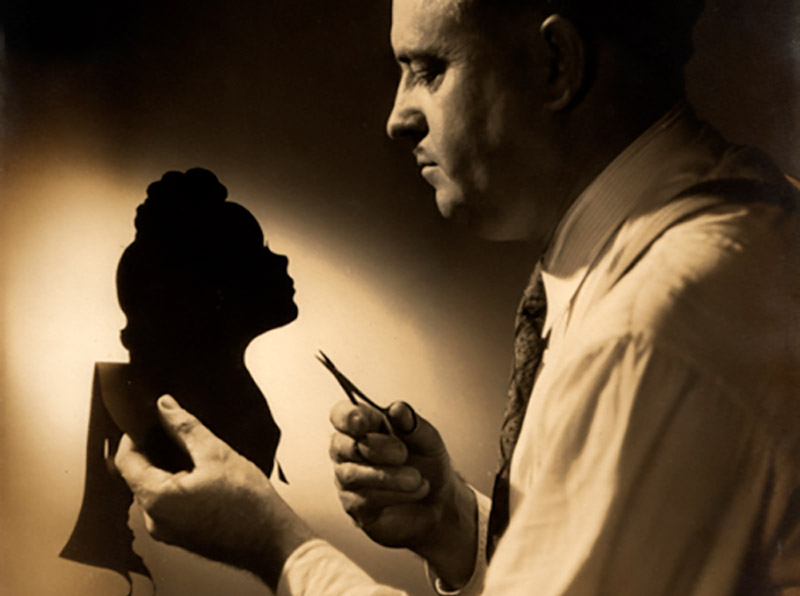When I am cutting silhouettes around the country, curious children gather around my table and pick up the delicate shards of black paper that I drop on the floor that are discarded from my silhouettes. They ask me how I make the silhouettes. I explain to them that it’s like drawing with scissors. They pick up my funny looking scissors and ask “what kind of scissors are these?” I explain to them that I buy them, and I make them better by welding an extra ring onto them to make them easier to cut with.
Their inquisitiveness is a daily reminder of where it all comes from, and reminds me how far i have come as a silhouette artist. My paper come in rolls, so I slice them by hand into individual sheets. My art table at home, where I do my children’s book illustrations, I designed myself and had it built by a friend who is a master woodworker.
There is no manual for being a silhouette artist, or any other type of artist for that matter. The things we need, we figure out along the way, and find ways to make them. That’s part of the fun of it. If you want to become better and better, you figure things out for yourself, and make your own modifications. What I learned from experience, is it’s not enough to go to the art supply store and buy what you need. You have to make, or modify many of your tools of the trade to become a more efficient artist. I have a special stand that I made so that I can grind and polish my metal silhouettes. Pretty much every supply I use to make my silhouettes, whether it’s my welding torch, scissors, or my art table, is modified by hand to make it more compatible to my art.
When my grandfather wasn’t cutting paper silhouettes, he would cut out 4 ft x 8 ft silhouettes out of plywood with a jigsaw. Before he cut out each wooden silhouette, he would grind down the teeth of the blade near the tip to make sure the blade didn’t snag in the wood. Not only was he making a piece of art by hand, he was modifying the tool used to make the art by hand. I am drawn to folks who make things by hand. Besides being artisans, there is a kind of cleverness in what they do, and in figuring out better ways to do it. Boat builders, artists, woodworkers, and others, who make things from a pile of wood, metal, paper, or a few cans of paint, all share something in common. It’s always nice to meet others who just dream things up and make them, and in some cases, make a life out of what they dream up. Although sometimes it seems that we are a disappearing breed, I think there is still a place in this world for a handmade life.




